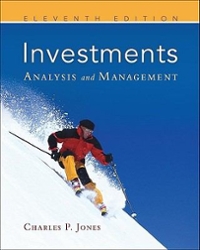Question
Apple Cash Return to Stockholders Look at how much the company has paid out in dividends each year in absolute terms and as a percent
Apple
- Cash Return to Stockholders
- Look at how much the company has paid out in dividends each year in absolute
terms and as a percent of net income each year.
- Look at how much stock the company has bought back each year and compute the
proportion of cash that is returned in buybacks
- If you can, look at the timing of the stock buybacks and the stock prices at which
these buybacks were done. If possible, pass judgment on whether the companys
timing of buybacks has been beneficial or not for the remaining stockholders.
- Affordable Dividends
- Examine how much the company had left over as cash flows, after taxes and reinvestment needs, but before debt repayments/issues.
- Estimate how much the company had left over as cash flows, after tax, reinvestment needs and debt repayments/issues.
- Estimate how much the company would have had left over as cash flows, after taxes and reinvestment needs, if it had used its current debt to capital ratio to fund reinvestment.
- Track the cash balance of the firm over time.
- Management Trust
- Take a look at the accounting returns (return on capital & equity) generated by the firm in the most recent year and compare to the cost of capital & equity for the firm.
- Estimate the accounting returns for each of the last few years (5-10) to see if there are trends in the returns, or if volatile earnings cause the returns to vary over time.
- Compare the accounting returns earned by your firm to other firms in its peer
group.
- Evaluate how well stockholders in the firm would have done, on a risk and market
adjusted basis, over the last few years.
- If the management of the firm has changed, make a judgment on whether you
think that the future will deliver significantly different results than the past.
- Changing Dividend Policy
- Given your assessment of cash flows and cash returns from earlier sections, estimate whether the company is generating cash surpluses or is at a cash deficit.
- Given your analysis of past returns (accounting and stock), make a judgment on whether you feel comfortable with current dividend/cash return policy.
- Bringing into account your earlier analysis of the debt capacity of the firm (that it is under, over or correctly levered), make a reassessment of whether the dividend policy of the firm is furthering the objective of moving towards the optimal or undercutting that objective.
- Comparing to Sector and Market
a. Relative to the sector to which this firm belongs, examine whether your firm is returning less than, about what it should or more cash than the typical firm.
b. Relative to the rest of the firms in the market, evaluate whether your firm is returning less than, about what it should or more cash than the typical firm.
Step by Step Solution
There are 3 Steps involved in it
Step: 1

Get Instant Access to Expert-Tailored Solutions
See step-by-step solutions with expert insights and AI powered tools for academic success
Step: 2

Step: 3

Ace Your Homework with AI
Get the answers you need in no time with our AI-driven, step-by-step assistance
Get Started


